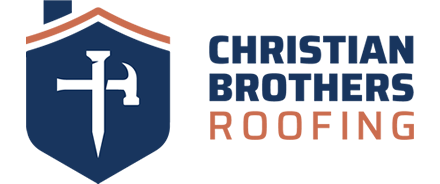Springtime storms make way for the beauty of summer flowers, garden abundance, and luscious green grass. Unfortunately, they can bring along strong winds, vicious hail, and toppling trees.
Storms are inevitable. Our homes take the brunt of a storm’s force while we are safely inside. Most homes can withstand an average storm, but as homes age and storms increase in severity, damage becomes more likely.
The threat to your roof is real, but if you keep an eye out for damage and address it promptly you can avoid major issues with your home. Before you pull out the ladder (or these days, your kid’s drone) to check your roof, here are some of the most common types of damage in Kansas City and how to spot them.
Hail Damage
Hail is a common occurrence in Kansas City. In fact, there have been 155 reported occurrences in the last 12-months. While the average hailstone size in this area is between pea and nickel-sized, the composition and age of your roof will be a major factor in damage.
Certain roof types are more durable against hail damage. It takes a fairly large hailstone to dent a metal roof, but once those larger stones fall damage will add up fast. A shingled roof isn’t as durable as metal, but they do stand up well to average hail stones.
One of the easiest ways to identify the potential for hail damage is by the hail’s size. Larger hail, measuring over 1-inch in diameter, is almost certain to cause roof damage. After the storm has passed, check your gutters and siding for visible damage. If you can see damage there, it’s likely your roof will look similar. A common sign of hail damage on a shingled roof is excess shingle gravel in the gutters, obvious bruising on the shingles, or dents on metal vents and flashings. When you see these things it’s time to call in the professionals.
Wind Damage
Kansas City is listed in the top 10 windiest cities in the United States. That means that almost every home is at risk for wind damage. Wind damage differs from hail in that it doesn’t have a uniform impact. All hail comes from the sky, but wind can attack your home from every direction.
That means it presents a very different threat to your roof and exposes different weaknesses. Wind damage will likely start at the edges or in places that are more exposed and less secure. Quality craftsmanship will be the biggest difference against this threat.
Tree Damage
One of the most reputable forms of home damage in Kansas City is actually foundation cracking caused by surrounding roots. We have a lot of old, large trees. Unfortunately, their roots are not the only threat to your home. Branches that don’t break, bend. If branches are bending on your roof they could be compromising its integrity. If they break on your roof, you are even more likely to experience damage.
One of the most dangerous threats during a storm is a tree falling. When they do, everything in their path experiences significant damage. It’s important to keep your trees well maintained and if possible off your roof. Trim branches that hang over or touch your roof. It doesn’t mean that other branches won’t break off and land on your roof, wind is unpredictable, but it will lessen your risk.
Your roof is the top defense of your home. When your roof is damaged, it can quickly and easily lead to greater, more expensive damage. Keeping it in its best form should be a top priority. Most home insurance covers roof damage caused by weather. So don’t panic.
If you’re concerned about the state of your roof, we can help. Contact Christian Brothers Roofing for a consultation today. You can trust us with your roof.





